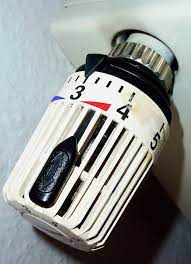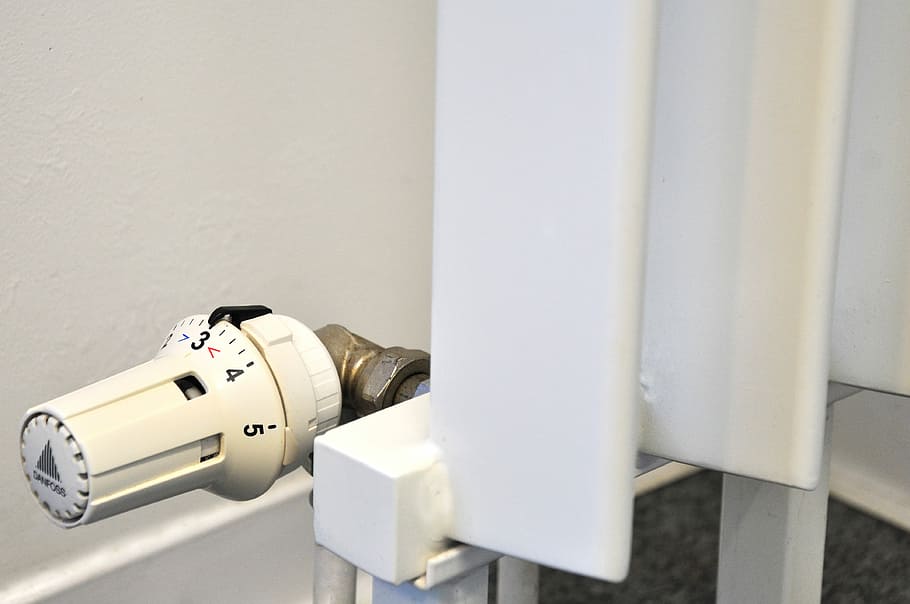Thermostat Setting For Winter
Heating your home in the winter months will consume lots of energy; therefore, you must discover a way to cut down on the cost of heating to keep warm for your loved ones through the winter months. One way to cut down on energy and the amount you spend on heating is to select the most appropriate thermostat settings for winter to maintain temperatures in your residence at a proper comfort level.
You could find that lowering the temperature on your thermostat at night improves your sleep quality. Our body temperature drops during the night, according to medical professionals. Our internal body temperatures become out of whack at night when it is excessively chilly or hot inside, resulting in less consistent sleep.
It is essential to consider various factors to set your temperature, including the time of day, the number of people in your home, and the size of your house. But, you can adhere to some simple house heating guidelines to make sure your home is at an optimal temperature in the winter months:
- When Home: 68-70 degrees Fahrenheit.
- When Sleeping: 65 degrees Fahrenheit.
- When You’re Away: 65 degrees Fahrenheit.
- Adjust the thermostat in increments of 5-8 degrees.
Winter brings frigid wind and snowstorms that reduce the temperature of your home. The ability to adjust your thermostat throughout the day will keep everyone comfortable and cut down on energy costs for heating your home.
Five tips for thermostat settings for winter
Homeowners are constantly looking to cut down on their energy consumption. The U.S. Department of Energy does not just suggest this because it improves to protect the planet, but figuring out the ideal thermostat can yield significant savings in energy during the You & Your Family.
While you may need to battle with your children or spouses to decide on the best temperature, everyone in the family must agree. Here are a few strategies to lower your energy costs while still maintaining a comfortable inside temperature for everyone will be happy.
Choose a temperature everyone can enjoy
Every person has their comfort level, and you’ll have to select the temperature of your thermostat in winter that is suitable for your household. While you debate various temperatures with your family members, you need to consider different temperatures in your home throughout the daytime.
A perfect temperature to live in should be 70°F, and bedrooms are slightly more relaxed, at 68 degrees Fahrenheit. Your body temperature fluctuates while you sleep, and you can get better sleeping quality by keeping your home temperature cooler at night.
It is also possible to reduce the thermostat setting if your family members are away from home for more than two hours. Reduce your thermostat to 68 at night, and only when there is no one at home could you cut your heating bill by 20 percent or more per month.
Gradually lower temperature settings
If that first chilling snap strikes your home, your family will turn up the heat to return to the standard indoor temperature you’re used to from the fall. But, after a couple of weeks, your family will start to adjust to lower temperatures and won’t require the same high-volume setting for comfort.
When all of your household members are comfortable with winter weather, you can reduce the temperature in your home by 1 degree per week. According to the ENERGY STAR, this difference of one degree might not sound like much, but you may begin to notice a 1 percent reduction on your monthly utility bill after a couple of days.
Adjust home temperature zones
Multi-zone heating and the cooling system let you adjust your HVAC system to a more comfortable temperature for different zones of your home. Each area is equipped with its thermostat to maintain different temperatures according to the requirements of different zones in your home.
Multi-zone cooling and heating systems are more complicated than the standard HVAC system; however, if you do already have one, make use of a few basic techniques to determine the ideal thermostat temperature for various parts of your house:
- Lower the temperature of your bedroom to 68.
- Maintain the temperature in living spaces in the vicinity of 72.
- The thermostat should be raised down the stairs and in basements.
- Lower temperatures are recommended for areas that receive plenty of direct sun.
- Rooms with lower temperatures are seldom used or utilized for a short period every day.
Although multi-zone heating systems cost more, they offer your family the best control over the temperatures throughout your home. It is possible to program an established temperature for every room in your home according to the usage, the time of day, and other variables.
Invest in a programmable thermostat
There’s no ideal interior temperature that all members of your family will be happy. However, you can buy a thermostat with an innovative feature to make it easier to recognize ways to conserve energy and cut down on your energy costs. A thermostat that can be programmed is an excellent choice for homeowners since this kind of thermostat could be utilized to manage the thermostat and temperature of your home on a schedule.
Whatever HVAC system you own, you can utilize an adjustable thermostat that will automatically alter your home’s temperature during specific intervals during the day. Here are some suggestions to make the most of your thermostat’s settings:
Read More: How To Install Heated Garage Floors? A Complete Guide About Heated Garage Floor
- Lower your home temperature when no one is at home for 2 hours or more.
- Lower thermostat settings at night, when all of us are asleep, to lower the cost of heating and increase the quality of your sleep.
- Connect your thermostat with your smartphone to control your thermostat from any location.
A smart thermostat will help maintain your residence at a pleasant temperature all day. Many thermostats let you connect via an app, so you can change the temperature within your home in case you don’t reduce the temperature before you leave.

Maintain your heating system
You may have the most advanced smart thermostat and the most sophisticated Multi-zone HVAC; however, if you don’t maintain your system, it could leave you caught in the cold, with bill-paying bills that are high along with frequent maintenance. Here are some tips to ensure that your heating system is running at its best during the winter months and avoid costly repairs:
- Refresh your air filters every month to ensure fresh air gets into your heating unit.
- Be sure to keep tables, chairs, and other obstacles from the vents so that warm air circulates your home.
- Ensure that the surrounding plants are kept trimming around your heating and cooling unit.
- Plan preventative maintenance for your home’s heating system every year before the cold winter weather arrives. Regular maintenance can spot minor issues before they turn to costly repairs.
It is simple for homeowners to ignore some of the “simple” parts to keep their home’s temperature at the appropriate level for your family. Moreover, maintenance for HVAC is among the things that people tend to forget about. Keep your air filters in good condition and keep your air vents clear to experience a dramatic effect on your electricity bill as well as your home’s temperature and the amount of energy you use this winter.
Is 72 too high for the thermostat in winter?
Whether 72 degrees Fahrenheit is too high for a thermostat setting in the winter depends on several factors, including personal preference, the size and insulation of the home, and the climate in which you live. For some people, 72 degrees might feel too warm, while others might find it too cool.
72 degrees might be a comfortable and energy-efficient setting in a well-insulated home with good heating systems. However, in older homes with inadequate insulation or in areas with harsh winter climates, 72 degrees might not be warm enough to provide adequate comfort.
It’s important to remember that the ideal thermostat setting is a matter of personal preference and may vary based on individual needs and the specific conditions in your home. Some people might prefer setting the thermostat higher to conserve energy and reduce heating costs, while others prefer a warmer setting for maximum comfort.
Conclusion
Maintaining your home’s temperature is an essential aspect of living in winter. You can apply some of the easy strategies above to energy consumption, lower the cost of energy, and ensure your family’s temperature throughout this winter season. All these goals can be accomplished by maintaining thermostat settings for winter.

